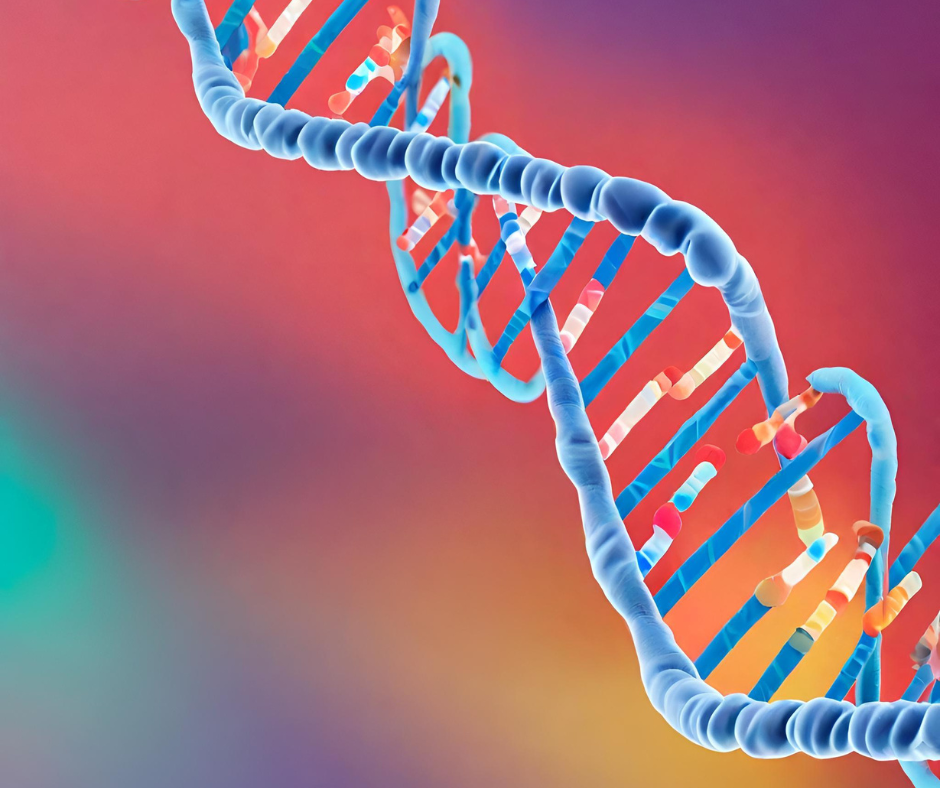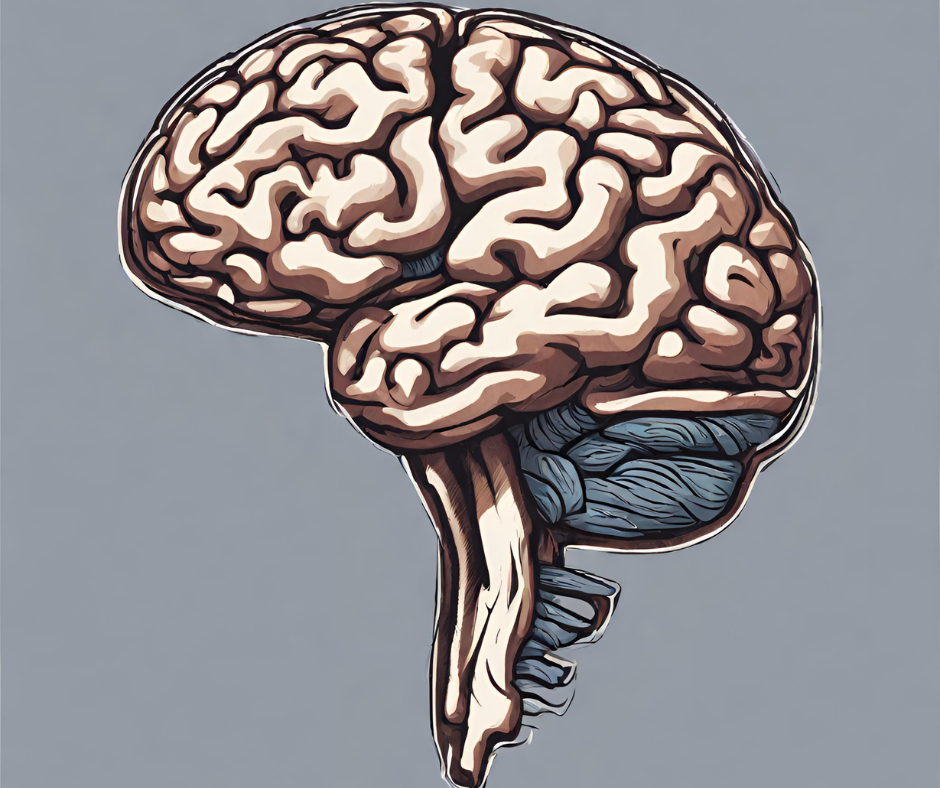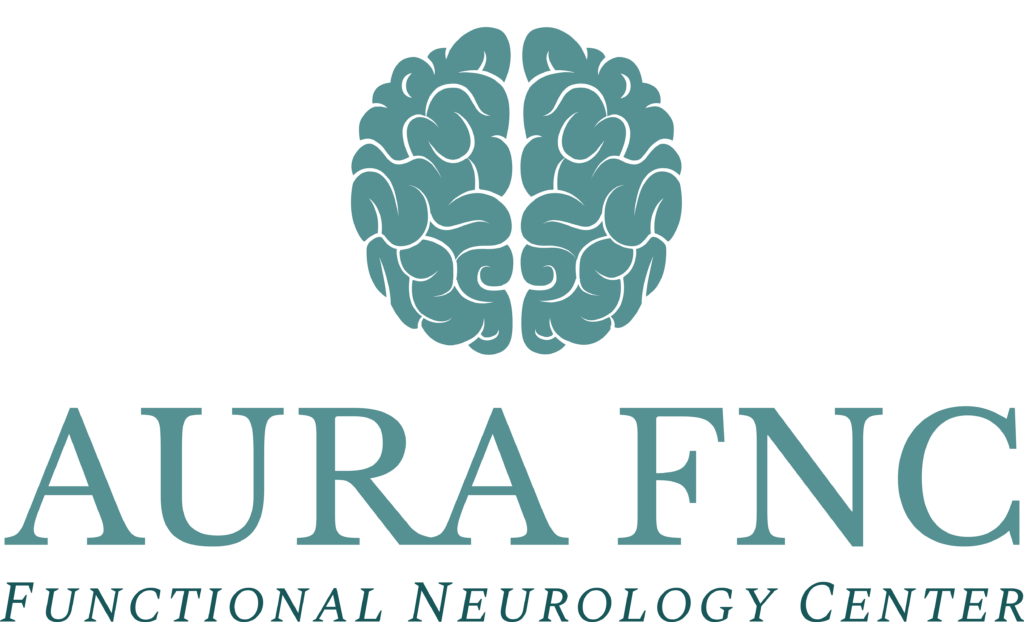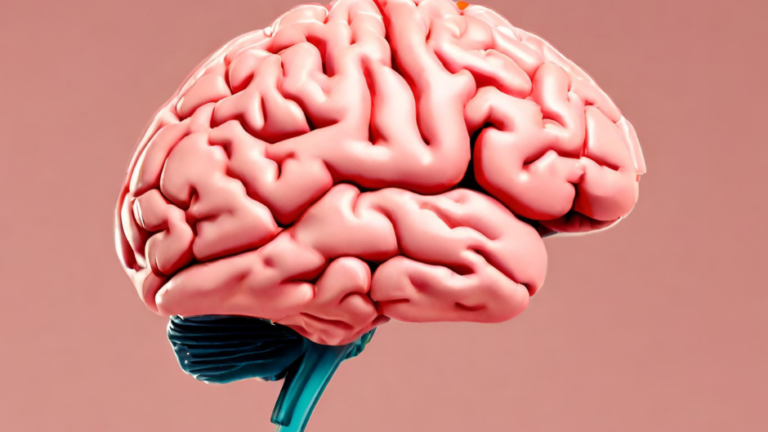Discover what the main cause of migraine is and how to navigate personalized diagnosis and treatment options. Dr. Diana Tyler was surprised when she found the answer.

Dr. Diana Tyler DC, DACNB
Founder of Aura Functional Neurology Center. Board Certified Chiropractic Neurologist and migraine specialist. Graduate of Palmer College of Chiropractic and Diplomate of the American Chiropractic Neurology Board.
Types of migraines and their symptoms
Migraine headaches can manifest in various forms, each with its own particular set of symptoms. Understanding the different types of migraines can help individuals recognize their specific migraine patterns and seek appropriate treatment for the appropriate diagnosis of migraine. Here are some common types of migraines:
1. Migraine with aura: People experiencing this type of migraine may have warning signs known as auras before the onset of the headache. Auras can include visual disturbances like blind spots, zigzag lines, colored spots or flashing lights. Other symptoms may include changes in sensory symptoms such as tingling or numbness in the face or hands, difficulty speaking, and temporary loss of vision.
2. Migraine without aura: Also known as “Common Migraine”, this is the most prevalent type of migraine. Individuals may experience a moderate to severe headache, often on one side of the head, along with symptoms like sensitivity to light, sound, or smell, nausea, neck pain, stiff neck, and vomiting.
3. Chronic migraine: This type of migraine is characterized by frequent migraine headaches. When experiencing 15 or more days per month for at least three months, with at least eight of those headaches being migraines. Chronic migraines can cause significant disruption to daily activities and may require preventive medication to manage the frequency and severity of the headaches.
4. Vestibular migraine: These migraines primarily affect the vestibular system, which controls balance and spatial orientation. Symptoms may include dizziness, vertigo, loss of balance, blurry vision, and difficulty concentrating.
5. Hemiplegic migraine: This rare and severe type of migraine can cause temporary paralysis or weakness on one side of the body (hemiplegia). Other symptoms can include severe headache pain, visual disturbances, and difficulty speaking.
6. Abdominal Migraine: A type of migraine that typically affects children, but can also affect adults. It is characterized by recurrent episodes of abdominal pain accompanied by nausea, loss of appetite, vomiting, anorexia, and pallor. This type of migraine often has no associated head pain.
7. Retinal Migraine: Also known as ocular or ophthalmic migraine, is a rare and serious type of migraine that affects the eye. It is caused by a sudden spasm of blood vessels in the retina, which is the light-sensitive layer at the back of the eye. Symptoms include temporary vision loss or blind spots in one eye, and blurred vision, usually followed by other typical migraine symptoms ranging from a dull ache to more severe headache symptoms.
Main Cause of Migraine
The main cause of migraines is not yet fully understood, but researchers believe that a combination of factors plays a role- from genetic and environmental, to lifestyle, and history of head injury. Migraine disease can be categorized into different types, each with its own set of symptoms and characteristics. Understanding the main causes of migraines is crucial for effective management and an effective treatment plan. Let’s explore some of the factors that contribute to the onset of migraines and how they can impact individuals who experience them.
Family history
Family history plays a significant role in the development of migraines and serves as a high-risk factor. Individuals with a family history of migraines are more likely to experience migraines themselves compared to those without a family history because of their genetic involvement in this condition.
The increased risk of migraines based on family history suggests that genetic factors may be involved. Studies have shown that certain genes may be passed down through generations, making individuals more susceptible to migraines. These genetic factors can affect various aspects, including the frequency, duration, and severity of migraines.
Having a family member with migraines can also provide insights into the specific triggers and symptoms that may be experienced. This information can be crucial in managing and preventing migraines effectively.
It is important for individuals with a family history of migraines to be aware of the potential risks and take steps to minimize their triggers and manage their lifestyle accordingly. This may include maintaining a healthy sleep schedule, managing stress levels, and treating the underlying condition while you identify and avoid certain trigger factors such as drops in blood sugar, certain food additives, oral contraceptives, artificial sweeteners, foods with monosodium glutamate, and caffeine withdrawal.
By understanding the impact of family history on the development of migraines, individuals can take proactive measures to reduce their risk and effectively manage their condition. Consulting a healthcare professional and a headache specialist can further guide and explore preventive treatments and can also play a crucial role in minimizing the frequency and severity of migraine attacks.

Hormone levels
Hormone levels, especially the fluctuation of estrogen, can play a significant role in the development and intensification of migraines in certain individuals. Estrogen is a hormone that naturally fluctuates throughout the menstrual cycle in women.
During the menstrual cycle, estrogen levels rise and fall. The drop in estrogen levels, specifically during the premenstrual phase and around the start of menstruation, is believed to trigger migraines in some women. These migraines are commonly known as menstrual migraines.
Estrogen fluctuation can also impact individuals during other periods of hormonal transition, such as pregnancy and menopause. In pregnancy, elevated estrogen levels can provide relief from migraines for some women, while for others, these levels can trigger migraines. Similarly, women going through menopause may experience an increase in migraines due to significant fluctuations in estrogen.
The relationship between hormones and migraines is complex and varies from person to person. It is essential for individuals affected by migraines to keep track of their hormone levels and identify patterns or triggers. This information can help in managing migraines effectively through lifestyle modifications, such as stress management, maintaining a consistent sleep schedule, and addressing hormonal imbalances, regulating histamine and mast cells with the guidance of a healthcare professional.
Understanding the impact of hormone fluctuations on migraines allows individuals to be proactive in managing their condition and seeking appropriate treatment options. By addressing hormone-related triggers, individuals can reduce the frequency and severity of migraines and improve their overall quality of life.
Physical activity and stress
Physical activity and stress can both contribute to the occurrence and severity of migraines. Engaging in intense physical activities or exercises can trigger migraines in some individuals. This may be due to the changes in blood flow and increased tension in the muscles and blood vessels that occur during exercise. Additionally, strenuous physical activity may lead to dehydration, which is known to be a migraine trigger.
Stress is another significant factor that can exacerbate migraines. When a person is stressed, the body releases stress hormones like cortisol, which can lead to muscle tension and vasoconstriction. This can trigger migraines or make them more severe in individuals who are already prone to them. This can be true for emotional stress or physical stress that can drive future attacks.
Examples of physical activities that may trigger migraines include high-intensity exercises, such as weightlifting or high-intensity Interval cardio workouts. Additionally, activities with a lot of repetitive motion or jarring movements, like running on concrete or playing certain sports, can also trigger migraines.
Common stressors that may contribute to migraines include work-related stress, personal relationships, financial worries, and major life events. Daily stressors, such as traffic or a busy schedule, can also play a role in triggering migraines.
Managing physical activity and stress is crucial for individuals with migraines. Strategies like incorporating regular exercise into your routine but avoiding excessive exertion, staying hydrated during physical activity, and practicing stress-reducing techniques like meditation or yoga can help reduce the risk of migraines. It is important for individuals to identify their personal triggers and make necessary lifestyle modifications to minimize the occurrence and severity of migraines.
Environmental triggers
Environmental triggers can play a significant role in the onset of migraines. Bright lights, loud noises, and strong smells are common culprits that can trigger a migraine attack. For individuals who are sensitive to light, exposure to bright lights, such as fluorescent lights or direct sunlight, can lead to the development of a migraine headache. Similarly, loud and sudden noises can also trigger migraines in susceptible individuals.
Changes in weather or temperature are other environmental triggers that can contribute to migraines. Fluctuations in barometric pressure, high humidity, or extreme temperatures can all be potential triggers for migraines. Some individuals may find that hot weather or cold weather can initiate a headache, while others may be sensitive to changes in weather patterns.
Certain foods and beverages can also act as triggers for migraines. Common culprits include alcohol, caffeine, chocolate, processed meats, and foods containing monosodium glutamate (MSG). It is important for individuals who experience migraines to keep a headache diary to identify their specific food triggers.

Altered metabolism in migraine
Altered metabolism plays a crucial role in the development and progression of migraines. Migraine pathophysiology involves changes in the body’s biochemistry and energy production, leading to mitochondrial dysfunction, oxidative stress, and impaired energy metabolism.
Mitochondria, the powerhouse of cells, are responsible for generating energy in the form of adenosine triphosphate (ATP). In individuals with migraines, mitochondrial dysfunction occurs, compromising ATP production and leading to an energy deficit. This lack of energy affects various cellular functions, including neurotransmitter synthesis and signaling.
Oxidative stress, an imbalance between reactive oxygen species (ROS) and antioxidants, is also heightened in migraine. ROS, such as free radicals, can damage cells and tissues. The increased oxidative stress in migraines contributes to mitochondrial dysfunction, further exacerbating the energy deficit.
Impaired energy metabolism affects key molecules involved in migraine pathophysiology. Nitric oxide, a signaling molecule that regulates blood flow and vascular tone, is dysregulated in migraine. Changes in nitric oxide levels can lead to blood vessel dilation and inflammation, triggering migraines.
Serotonin, a neurotransmitter involved in pain modulation, is also affected by altered metabolism in migraines. Reduced serotonin levels can increase pain sensitivity and contribute to migraines.
Calcitonin gene-related peptide (CGRP), a neuropeptide involved in pain transmission and inflammation, is elevated in migraines. Altered metabolism can influence CGRP levels, further contributing to migraine pathophysiology.
Migraine brain
During a migraine attack, the brain undergoes several changes that impact its activity and function. These changes contribute to the debilitating symptoms experienced by migraine sufferers.
One key impact of a migraine on the brain is the alteration of brain activity. Neuroimaging studies have shown that during a migraine attack, there is increased electrical activity in certain areas of the brain, such as the cerebral cortex. This hyperexcitability can cause a cascade of events that lead to the characteristic symptoms of migraines, including pain, sensitivity to light and sound, and nausea.
In addition to changes in brain activity, migraines also affect brain function. The altered activity in the brain during a migraine attack can disrupt the normal communication between brain regions, leading to impaired cognitive function and sensory processing. This can result in difficulties with concentration, memory, and perception.
Migraines can affect different areas of the brain, including the trigeminal system, which is involved in pain sensation, and the limbic system, which regulates emotions. Neurotransmitters, such as serotonin and dopamine, play a crucial role in migraine pathophysiology. Imbalances in these neurotransmitters can contribute to the development and maintenance of migraines.
Overall, migraines have a significant impact on the brain, causing temporary and permanent changes in its activity and function through the concepts of neuroplasticity. Addressing the underlying neurological dysfunction is how a Functional Neurologist provides migraine treatment.

Person-to-person variations
Migraine is a complex neurological condition that varies widely from person to person. One of the most significant aspects of this variation is the manifestation of migraine attacks. While some individuals may experience classic migraine symptoms such as headache pain, sensitivity to light and sound, and nausea, others may have atypical symptoms like visual disturbances, sensory abnormalities, or even no headache at all.
In addition to the differences in symptoms, the frequency, duration, and severity of migraine attacks can also vary greatly between individuals. Some people may experience migraines infrequently, with months or years between attacks, while others may have frequent episodes, occurring several times a month or several times per week. The duration of migraine attacks can range from a few hours to several days, with some individuals experiencing prolonged attacks known as status migrainosus.
Accompanying symptoms, such as aura, fatigue, mood changes, and gastrointestinal disturbances, can also differ from person to person. While some individuals may experience visual disturbances or other neurological symptoms before or during a migraine attack, others may not have any aura at all. Fatigue and mood changes are also common during migraines, but the intensity and duration of these symptoms can vary.
Diagnosing a Migraine Headache
Diagnosing a migraine type involves analyzing the individual’s symptoms, and medical history, and conducting physical and neurological bedside examinations. Migraine attacks can be quite complex and can mimic other types of headaches, making an accurate diagnosis crucial.
The healthcare provider will typically ask detailed questions about the frequency, duration, and characteristics of the headaches, as well as any associated symptoms. They may also inquire about potential triggers and family history of migraines.
A physical and neurological examination is conducted to rule out any underlying conditions that could be causing the headaches. In some cases, additional tests may be ordered, such as imaging scans or blood tests, to further investigate and rule out other possible causes.
Keeping a headache diary can also be helpful in tracking the pattern and severity of the headaches, aiding in the diagnosis process for treatment of migraines. Once a migraine diagnosis is confirmed, appropriate treatment options can be explored to help manage and alleviate symptoms.
Metabolic, structural, and neurological components of migraine
Metabolic, structural, and neurological components play key roles in the development and manifestation of migraines.
Metabolic factors refer to processes within the body that involve energy production and chemical reactions. Imbalances in certain metabolic pathways, such as changes in neurotransmitter levels or abnormal energy metabolism, have been associated with migraines. For example, low serotonin levels can contribute to the onset of migraines by affecting blood vessel constriction and inflammation.
Structural factors refer to physical abnormalities or irregularities in the brain or blood vessels. Some individuals may have a higher susceptibility to migraines due to structural variations, such as increased sensitivity to certain triggers or abnormalities in the brainstem or cortical spreading depression (a wave of neuronal electrical activity). Structural factors can affect how the brain processes sensory information and can contribute to the initiation of migraines.
Neurological factors involve the complex interactions between the brain, nervous system, and pain pathways. Migraines are believed to involve a cascade of neurological events, including the activation and sensitization of neurons in the trigeminal nerve system. This can result in the release of neuropeptides and inflammatory substances that lead to pain, sensitivity to light, and other symptoms commonly associated with migraines.
The development and manifestation of migraines are influenced by a combination of these metabolic, structural, and neurological factors. The interplay between these components can vary from person to person and contribute to the individualized nature of migraine attacks. Understanding these underlying mechanisms is essential in the development of targeted treatments and preventive strategies for migraine sufferers.
Conclusion
In conclusion, the main cause of migraines is multifactorial and can vary from person to person. While there is no singular cause, several factors have been identified as influential in migraine development.
Family history plays a significant role, as individuals with a family history of migraines are more likely to experience migraines themselves. Hormone levels, particularly fluctuations in estrogen during menstrual cycles, are also thought to contribute to migraine development.
Physical activity, both excessive and sudden lack of it, can trigger migraines. Environmental triggers such as bright lights, strong chemical smells, and certain foods like MSG have also been identified as common triggers.
Additionally, stress and anxiety can play a major role in migraine development. Physical and emotional stress can cause muscle tension and lead to migraines, while relaxation techniques and meditation can help manage symptoms.
Finally, an altered brain metabolism and associated structural and functional brain differences in those with migraine disease when it comes to the cortical, subcortical, and brainstem mechanisms.
Taken together, migraines are a complex condition with various contributing factors. By identifying and addressing these factors, individuals can work towards managing and preventing migraines more effectively. Talk to your Health Care Provider to start addressing these components today.







